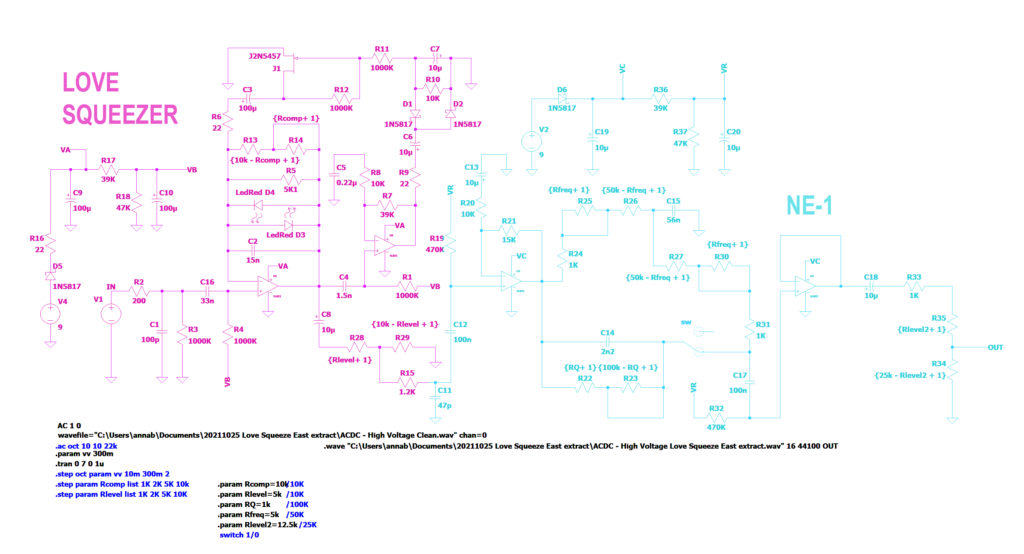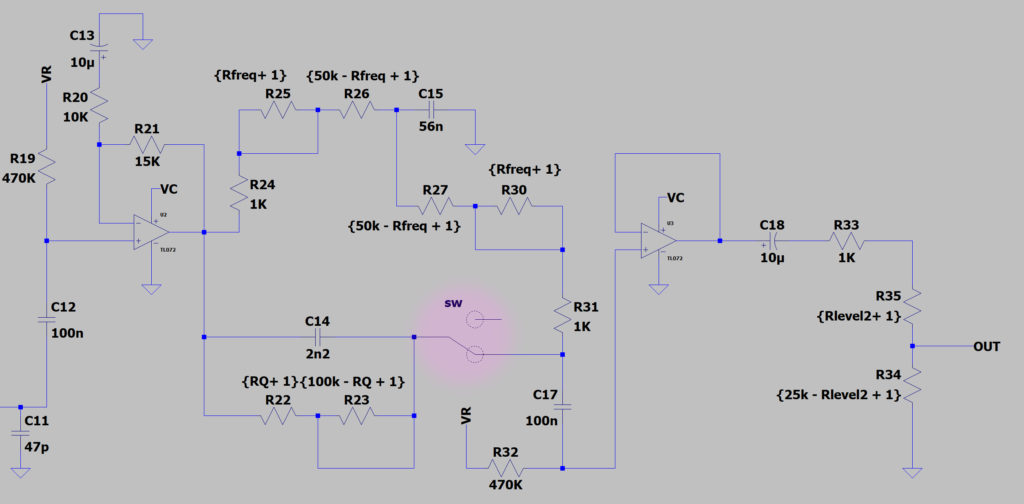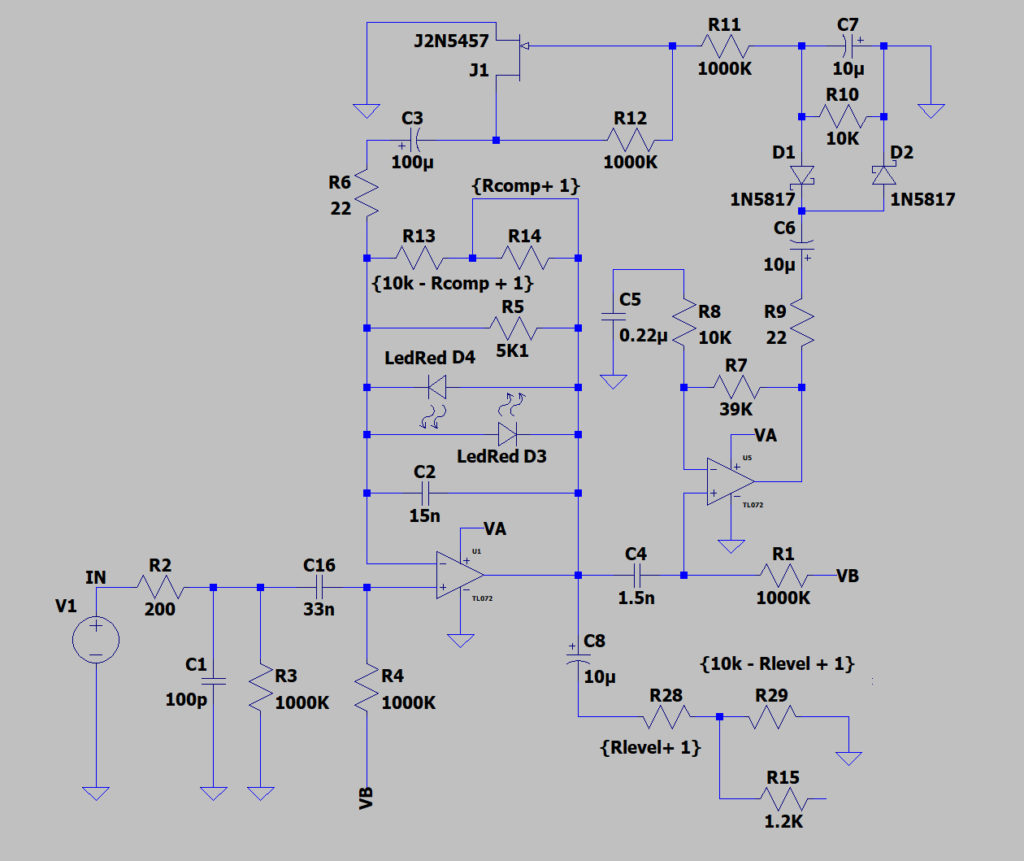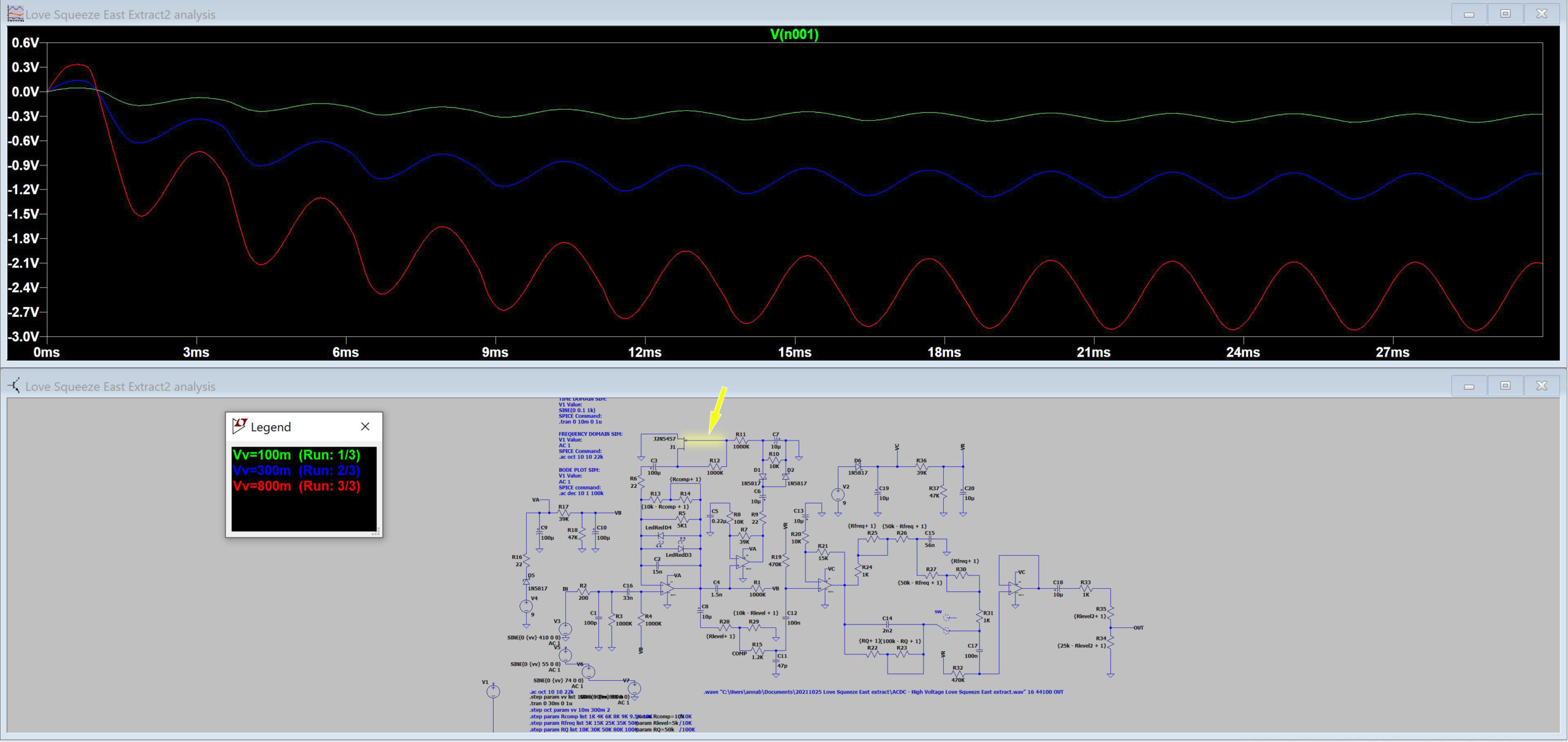
hmmm~
I’ve decided to make a compressor / pre-amp combo pedal based off the Rothwell Love Squeezer and the Yamaha NE-1 pedals! This is me simulating the mashed up circuitry of both pedals to attempt to gain a better understanding before embarking on the build.
The Rothwell Love Squeezer is said to be a excellent compression pedal which does not colour the tone, there are tons of good reviews on the web, certainly enough to get me interested in building it. Meanwhile, the Yamaha NE-1 is known as a one trick pony, however the “canned yam” variant is said to be more usable as it sports an adjustable Q setting as opposed to 3 fixed togglable values. More on that later. Below I leave the links to relevant reviews/pages that guided me through this endeavor.

Modelling the circuits into LTspice, I initially made a mistake with the NE-1’s frequency adjusting dual-gang potentiometer. They are positioned tail end to tail end, and initially I had them going in the same direction. Quickly realised it was wrong and fixed it but ended up putting them head to head, which was weird because it worked fine when I had all pots set to mid. Only noticed something was up because when I tried to increase the frequency, it ended up scooping out the lower end. Completely reversed!
A little bit of frustration there.
I do not have potentiometers in LTspice, I have been making do with the voltage divider setup shown above, linking the 2 resistors via a simple equation. However, this takes up a lot of space and leads to mistakes as it is not so apparent which is the head or tail. Adding a potentiometer to the library is now high on my to-do list.
I’ll be using this clean .WAV file in the WAV simulations of this circuit:

The NE-1 “Canned Yam” has 4 adjustments: Frequency | Q | Q-switch | Level


-The NE-1 pre-amp seems to scoop at the central frequency controlled by R_freq. We see that R_freq shifts the center of the scoop, scooping out higher frequencies when R_freq is higher.
-The Q (R_q) value controls the bandwidth around that central frequency which is attenuated (scooped). The higher the Q value the narrower the band is and the more intense attenuation. The lower the Q value, the wider the band and less focused the attenuation.
-I also observe that at higher central frequencies, the effect of Q becomes larger such that the same value of Q is able to produce smaller bandwidths and higher attenuation. Not to sure what to make of this yet.


The Q switch highlighted in pink above, disconnects the Q adjustment circuit from the signal line. What results looks like just a low pass filter, adjusting the frequency still has an effect of moving the falling edge accordingly. There is a massive loss in volume. A very flat and dull sound, listen:
That is pretty much it for the NE-1 section of the circuit, next we look at the Rothwell Love Squeezer portion:

The Rothwell Love Squeezer has only 2 adjustments: Comp | Level

Sweeping for values of R_comp, we see the compression value affects the gain/attenuation in the frequency response plot. So far it seems like a good compression pedal that affects all frequencies evenly; but since this is a compression pedal, it would make much more sense to sweep for input volume to see how the pedal reacts to compress the signal.


The compressor works by controlling the gate voltage on the JFET controlling the gain of the opamp. With zero voltage on the gate, the JFET is idle at 300R and this gives a gain of 10. The circuit generates a feedback signal which is fed to the JFET’s gate, this signal is in phase with the input signal and increasingly negative as input volume increases. When this negative bias is applied to the gate, the JFET’s resistance increases and the gain decreases. Therefore low volumes are boosted more and higher volumes less. Producing a compression effect on the signal.
As of now, I don’t quite understand how the LEDs come into play, they look like a soft clipping set up, which makes me worry about distortion. Though I know the second amplifier works to pump a negative control signal for the JFET gate, I have not worked through how it does this exactly as well.
It sounds alright? I hear a little distortion in there but otherwise it’s still pleasant. I will have to make the real thing to know for sure. Then we will revisit this circuit again.
Nuuuuu dun angweee
>:3c